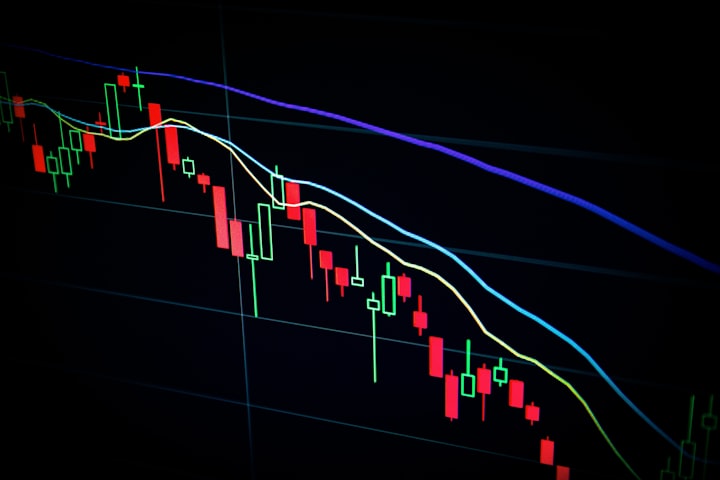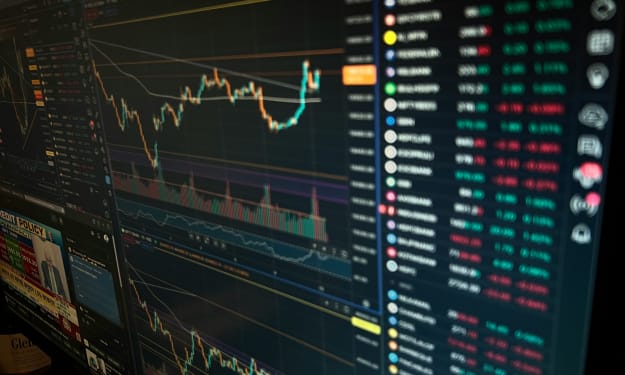"Understanding the Sensex and Nifty: India's Main Stock Market Indices"
"Key Differences, Importance, and Factors Affecting Their Performance"

"The stock market is a device for transferring money from the impatient to the patient." - Warren Buffett
The Bombay Stock Exchange (BSE) and National Stock Exchange (NSE) are India's two main stock exchanges. They are home to hundreds of companies whose shares are traded by millions of investors every day. However, most investors look at the Sensex and Nifty to gauge the performance of the Indian stock market as a whole.
What is the Sensex?
The Sensex, or the Sensitive Index, is the oldest and most widely recognized stock market index in India. It was introduced by the BSE in 1986 to track the performance of the top 30 companies listed on the exchange. These 30 companies are selected based on a set of criteria such as market capitalization, trading volume, and industry representation.
The Sensex is calculated using the free-float market capitalization method, which means that only the shares that are available for trading in the market are considered. The base year for the Sensex calculation is 1978-79, with a base value of 100 points.
What is the Nifty?
The Nifty, or the National Stock Exchange Fifty, is a stock market index introduced by the NSE in 1996. It tracks the performance of the top 50 companies listed on the exchange, selected based on market capitalization and other factors.
The Nifty is also calculated using the free-float market capitalization method, with the base year of 1995 and a base value of 1,000 points.
Key Differences between the Sensex and Nifty
The Sensex and Nifty are similar in many ways, but there are a few key differences between the two indices:
Number of Companies: The Sensex tracks the performance of 30 companies, while the Nifty tracks the performance of 50 companies.
Base Year and Value: The Sensex's base year is 1978-79 with a base value of 100 points, while the Nifty's base year is 1995 with a base value of 1,000 points.
Methodology: The Sensex is calculated using the full market capitalization method, while the Nifty is calculated using the free-float market capitalization method.
Industry Representation: The Sensex includes companies from various sectors, while the Nifty is dominated by the financial services and information technology sectors.
Why are the Sensex and Nifty Important?
The Sensex and Nifty are important because they are widely regarded as barometers of the Indian stock market's performance. Investors use these indices to assess the overall health of the market and to make investment decisions accordingly.
The Sensex and Nifty are also used as benchmarks by mutual funds, exchange-traded funds, and other financial products that invest in Indian stocks. Many investment funds try to match or outperform the Sensex or Nifty's performance, making these indices crucial for evaluating their performance.
Factors Affecting the Sensex and Nifty
Several factors can affect the Sensex and Nifty's performance, including:
Macroeconomic Factors: These include GDP growth, inflation, interest rates, and the overall economic outlook.
Company Earnings: The earnings of the companies listed on the Sensex and Nifty can impact the indices' performance. If a company reports better-than-expected earnings, its stock price may rise, which can positively impact the indices.
Global Events: Developments in the global economy, such as changes in oil prices, can affect the Sensex and Nifty's performance.
Political Developments: Political instability, policy changes, and regulatory developments can impact the stock market's performance and the Sensex and Nifty indices.
Foreign Investment: The amount of foreign investment flowing into India can also impact Sensex and Nifty's performance. Increased foreign investment can lead to higher stock prices and vice versa.
How to Invest in the Sensex and Nifty?
Investors can invest in the Sensex and Nifty by purchasing mutual funds, exchange-traded funds (ETFs), and index funds that track these indices' performance.
Many brokerage firms in India also offer index-based products that allow investors to buy and sell shares of the companies listed on the Sensex and Nifty.
Investors can also invest in individual companies listed on these indices by purchasing their shares directly. However, investing in individual stocks can be riskier than investing in index-based products, as the performance of individual stocks can be volatile and unpredictable.
Conclusion
The Sensex and Nifty are two important stock market indices that track the performance of the Indian stock market as a whole. They are widely used by investors and financial professionals to assess the market's health, and many investment products are designed to track their performance.
While the Sensex and Nifty are similar in many ways, they have a few key differences that investors should be aware of. Understanding how these indices work and the factors that can impact their performance is crucial for making informed investment decisions.
"The four most dangerous words in investing are: 'this time it's different." - Sir John Templeton
About the Creator
Jano Jaison
As an article writer, my passion is to write great content.
I have honed my skills as an article writer through extensive reading and practice.
In my free time, I enjoy exploring new topics and experimenting with different writing styles.





Comments
There are no comments for this story
Be the first to respond and start the conversation.